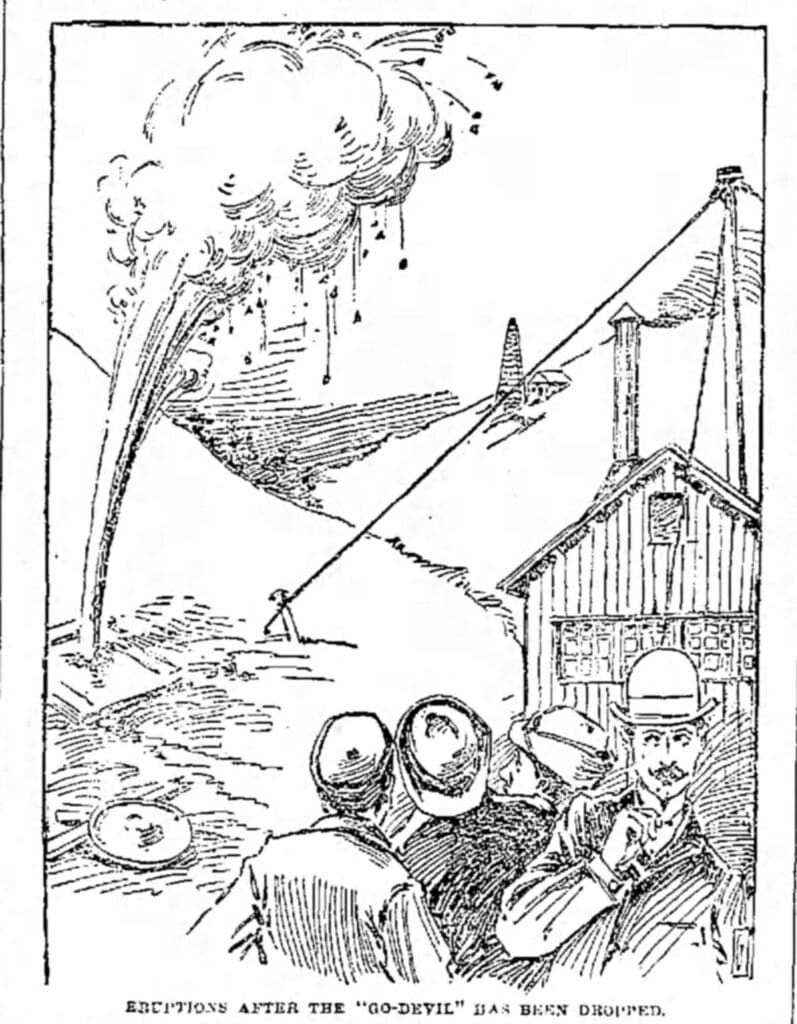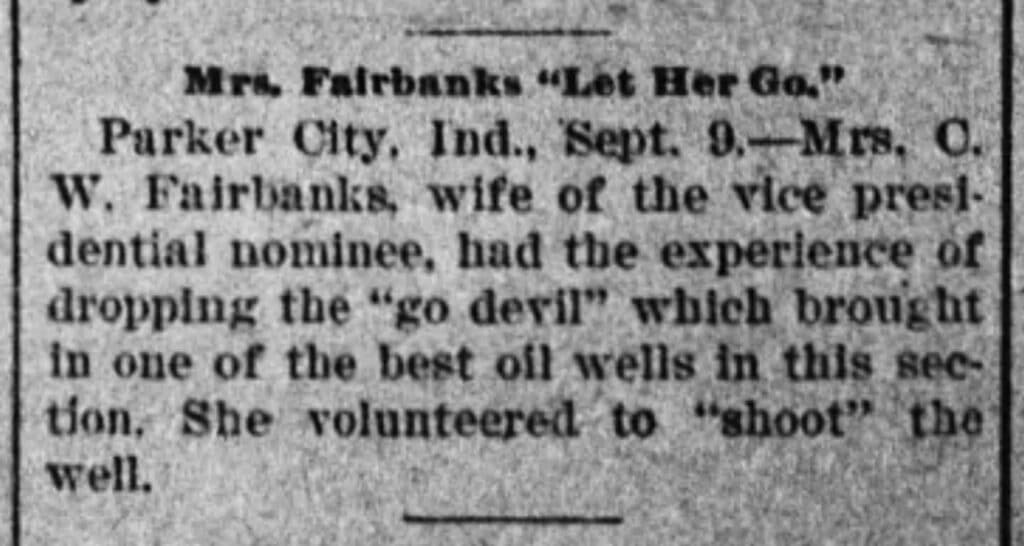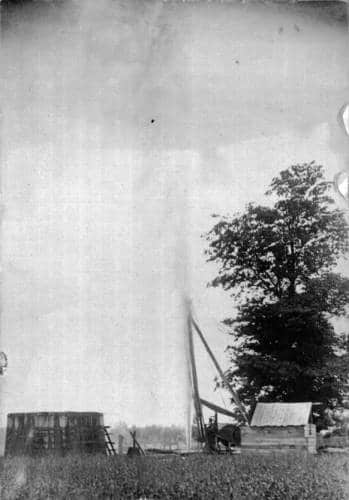Dropping the “Go Devil”: Drilling for Natural Gas
By: David Heighway, Hamilton County Historian
 When discussing Hamilton County gas boom history, people are aware of the many industries (glass, brick, etc.) that grew up because of natural gas discoveries. What is often overlooked is the first step in the process – that is, getting the natural gas. Exploring this topic leads to several questions. Where did the gas come from? How did they go about getting it? What happened to all of it?
When discussing Hamilton County gas boom history, people are aware of the many industries (glass, brick, etc.) that grew up because of natural gas discoveries. What is often overlooked is the first step in the process – that is, getting the natural gas. Exploring this topic leads to several questions. Where did the gas come from? How did they go about getting it? What happened to all of it?
Geologically speaking, the gas boom started in a seabed that covered the state in Indiana millions of years ago. As time passed the sediment from this seabed turned into limestone, and the plants and other natural items on the floor of the sea were trapped in pockets of the rock. This organic material eventually broke down into natural gas. The area that was heaviest in these pockets became known as the Trenton field, and covered much of northeastern Indiana. Hamilton County was on the very southwestern edge.
The first successful well in the state was drilled near Eaton in September of 1886. The first wells in Hamilton County were drilled in 1887, with the first successful one being found at Noblesville in January. It was at what today is the corner of 11th and Pleasant Streets. It was ignited so that people could visit and admire the flow of gas and, ironically, was left to burn for a few months until it was figured out how to cap a high pressure well. In April of that year, the largest well in the county was found – the Wainwright Wonder, located on the Wainwright farm on north 10th street in Noblesville. Gas was struck at 850 feet below the surface and came out at a pressure of 800 p.s.i. The pressure blasted chunks of the surrounding limestone rock up from the well. It too was left open for several months.
 The newspapers said the gas was usually found between 350 to 2300 feet below the ground. The retrieval process involved a derrick and a rotary drill, drilling through dirt and gravel until the Trenton limestone was reached. At that point, in order to crack the rock, nitroglycerine was used. This was called “shooting a well” and involved large amounts of explosive.
The newspapers said the gas was usually found between 350 to 2300 feet below the ground. The retrieval process involved a derrick and a rotary drill, drilling through dirt and gravel until the Trenton limestone was reached. At that point, in order to crack the rock, nitroglycerine was used. This was called “shooting a well” and involved large amounts of explosive.
For example, in 1903, 16 quarts (yes, quarts) of nitroglycerine were used to shoot a well on Harrison Street in Noblesville. The procedure was to pour the explosive into a tin tube about 5 feet long and 5 inches in diameter called a “shell” or “torpedo” which was sealed and lowered into the well. Then a heavy, pointed piece of iron called a “go-devil” was dropped into the mouth of the well and everyone quickly walked away. A few seconds later, the “go-devil” would strike the torpedo, there would be a rumble and a spout of dirt which would, hopefully, then be followed by a rush of gas.
 There were stories and beliefs connected with the “go-devil”. One belief was that if a young woman dropped it into the well, the well would be a good producer. If the well was successful, it might be named for the woman. Girls as young as 11 were allowed to do this, a practice that OSHA would probably have problems with today. Another activity that young people would do was searching for the “go-devil” afterward. It usually was not destroyed by the explosion, but would be launched into the air and land somewhere in the vicinity. Again, not a safe practice.
There were stories and beliefs connected with the “go-devil”. One belief was that if a young woman dropped it into the well, the well would be a good producer. If the well was successful, it might be named for the woman. Girls as young as 11 were allowed to do this, a practice that OSHA would probably have problems with today. Another activity that young people would do was searching for the “go-devil” afterward. It usually was not destroyed by the explosion, but would be launched into the air and land somewhere in the vicinity. Again, not a safe practice.
As might be imagined, there could be problems with shooting a well. A well being drilled near New Britton in 1904 ran into a layer of rock thought to be very thick. One shell was filled with twenty quarts of nitroglycerine and was lowered into the well on a rope as another shell of the same size was being filled. Suddenly the rope on the first one came untied and the shell dropped rapidly down the well. The crew fled for their lives and managed to reach a safe distance before the shell landed. The extent of the damage is not known, but the crew said the explosion was “very loud”.
The natural gas boom went bust surprisingly quickly. One of the main reasons was that much of the gas was actually wasted. Promoters would do public displays by lighting the gas flowing from a well and leaving it to burn. This was their way of claiming to have an infinite amount of gas. Tourists would come and visit these fields of flaming wells. Despite warnings from geologists, they continued to do this until there was a noticeable loss in the pressure. The gas boom ended in Hamilton County around 1905-1910. While gas was occasionally found later, the large commercial wells failed. It was the end of a very distinctive period in Hamilton County history.
